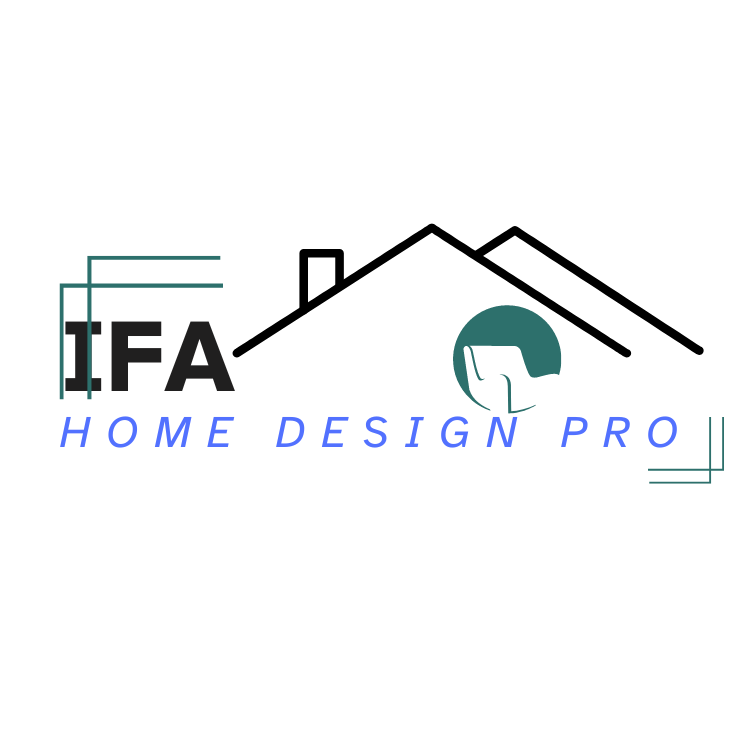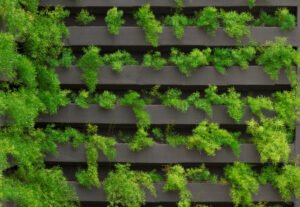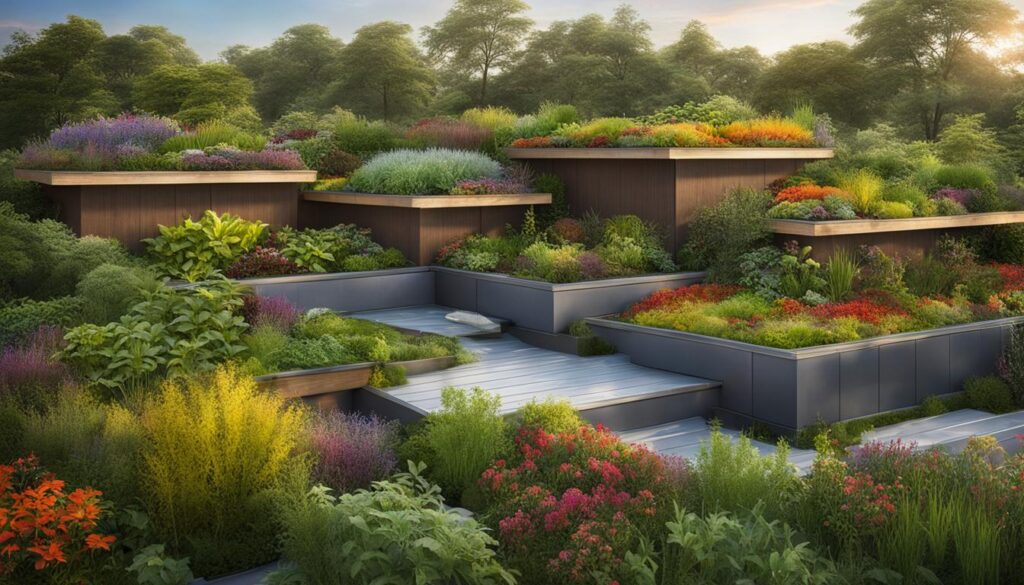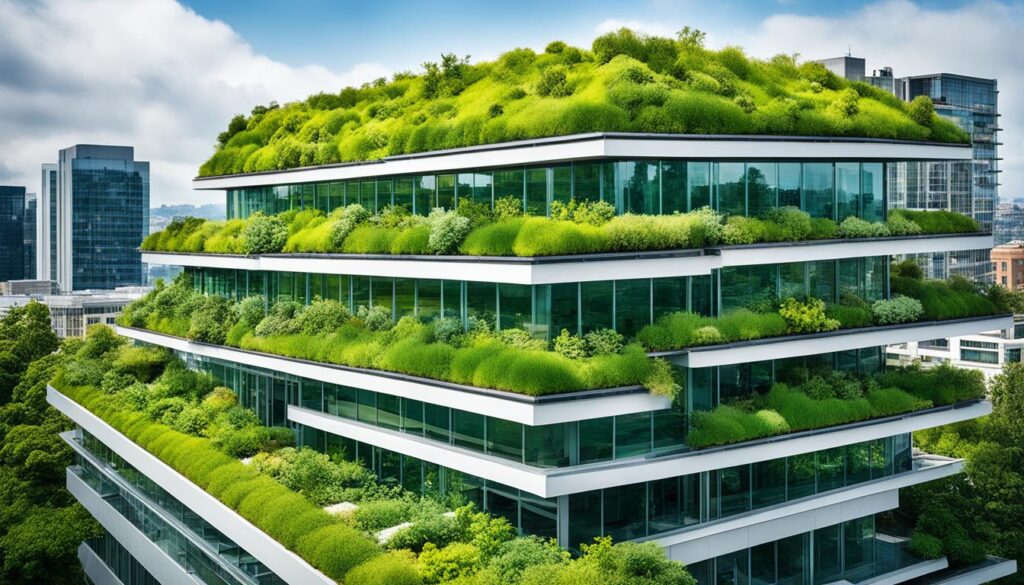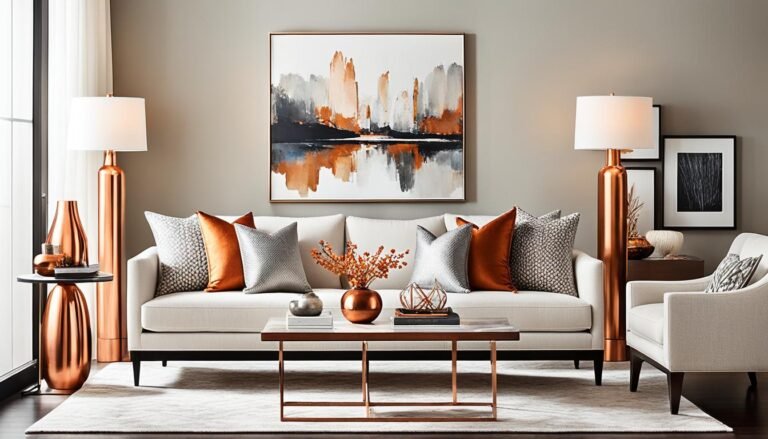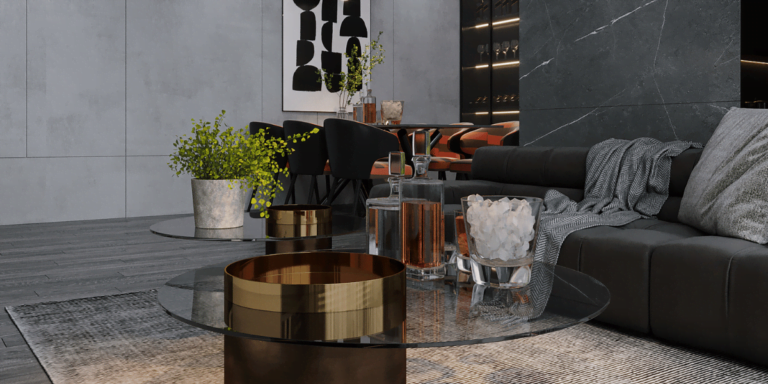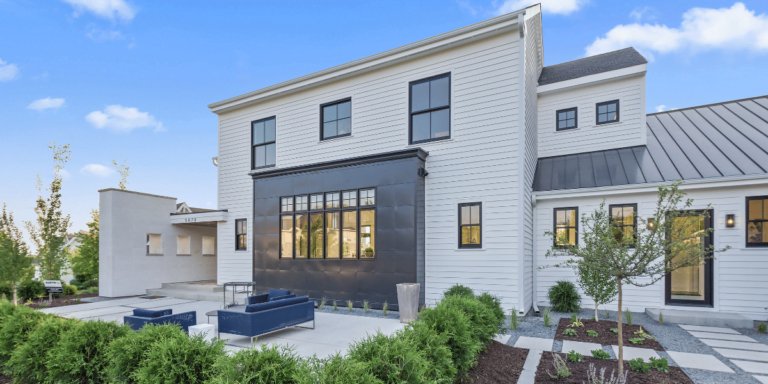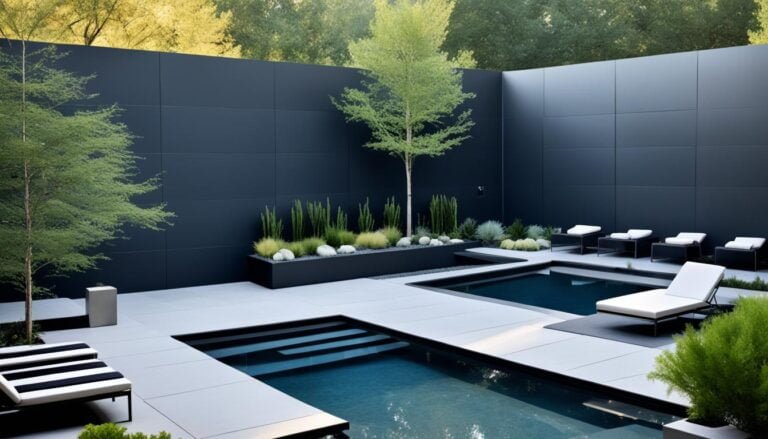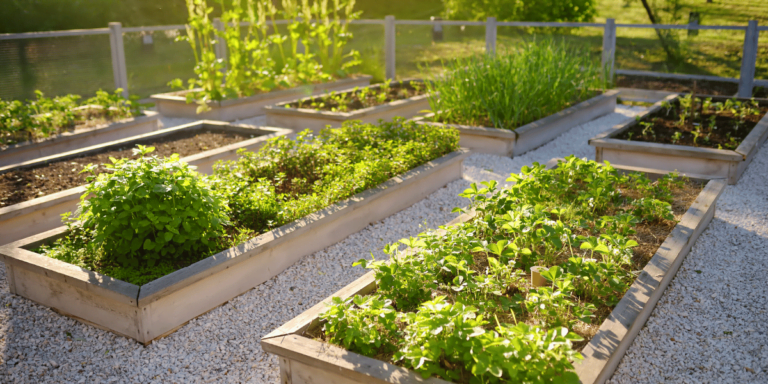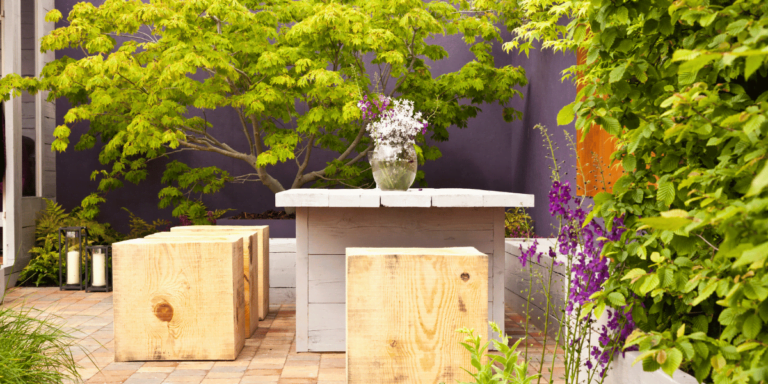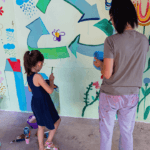Welcome to the world of green roof technology, where sustainable urban gardening meets eco-friendly landscape design. With innovative water conservation techniques, renewable energy integration, and wildlife habitat garden creation, green roofs are transforming urban spaces into high-tech smart gardens. From space-efficient vertical gardening to urban permaculture practices and indoor hydroponic systems, green roof technology offers a myriad of opportunities for organic composting methods and contemporary garden artistry. Embracing the biophilic design principles and smart garden automation, green roofs contribute to eco-friendly garden renovation, fostering a harmonious relationship between nature and the built environment.
Key Takeaways:
- Green roof technology combines sustainable urban gardening and eco-friendly landscape design.
- Innovative water conservation techniques and renewable energy integration are key features.
- Green roofs create wildlife habitats and provide recreational spaces in urban areas.
- Space-efficient vertical gardening and urban permaculture practices are popular green roof techniques.
- Smart garden automation and biophilic design principles enhance green roof functionality.
Cooling and Energy Efficiency
Green roof technology offers an innovative and sustainable solution for cooling buildings and improving energy efficiency. These living roofs act as natural insulators, significantly reducing the amount of heat absorbed by buildings and minimizing heat transfer. By implementing green roofs, cities can effectively combat the urban heat island effect, creating more comfortable and sustainable urban environments.
Green roofs provide a range of benefits when it comes to cooling buildings and reducing energy consumption. Let’s take a closer look at how green roof technology achieves these positive outcomes:
Natural Insulation
Green roofs are composed of layers of vegetation and substrate that create a barrier between the building and the external environment. This insulation effectively reduces heat exchange, keeping buildings cooler in hot weather. By preventing excessive heat from entering the building, green roofs significantly decrease the need for air conditioning, leading to lower energy consumption and cost savings.
Reduced Urban Heat Island Effect
The urban heat island effect refers to the phenomenon where urban areas experience higher temperatures compared to surrounding rural areas. This effect is primarily caused by the abundance of concrete and asphalt, which absorb and radiate heat. Green roofs combat the urban heat island effect by replacing heat-absorbing surfaces with green spaces that absorb and dissipate heat through evaporation.
This image illustrates the impact of green roof technology on cooling buildings:
Energy Consumption and Savings
By providing natural insulation and reducing the urban heat island effect, green roofs contribute to significant energy savings. Lower energy consumption for cooling purposes not only reduces utility bills but also decreases overall energy demand, promoting a more sustainable energy future. Investing in green roof technology is not only an environmentally conscious choice but also a financially prudent one in the long run.
Furthermore, green roofs contribute to energy efficiency in both hot and cold climates. In addition to cooling buildings in the summer, green roofs also provide insulation during the winter months. By acting as a thermal buffer, they help reduce heat loss and energy consumption for heating, making them a versatile and sustainable choice for all climates.
Overall, green roof technology is a sustainable and energy-efficient solution for cooling buildings and reducing energy consumption. Implementing green roofs in urban areas can lead to significant benefits, including lower energy bills, reduced environmental impact, and improved overall comfort and livability.
Stormwater Management
Green roofs play a crucial role in managing stormwater effectively. Green roof technology provides a sustainable solution to combat stormwater runoff and reduce the risk of flooding in urban areas. By absorbing rainwater, green roofs minimize the volume of runoff that enters stormwater systems, mitigating the strain on drainage infrastructure during heavy rainfall. Additionally, green roofs act as natural water reservoirs, storing and slowly releasing water over time, further preventing overwhelming drainage systems. This innovative approach to stormwater management contributes to creating more sustainable urban areas that are resilient against the impacts of climate change.
Image: The image above showcases a green roof absorbing and storing rainwater, contributing to effective stormwater management.
Biodiversity Enhancement
Incorporating green roof technology into urban areas has a significant impact on enhancing biodiversity. Green roofs provide habitats for a variety of plants and insects, contributing to the conservation of urban ecosystems. By creating lush and thriving green spaces, these living roofs support local wildlife populations and promote ecological balance.
Green roofs offer shelters and nesting sites for a diverse range of species, including birds, bees, butterflies, and other insects. The abundance of vegetation on green roofs attracts pollinators, such as bees and butterflies, which play a crucial role in the reproduction of flowering plants. This interdependency fosters a thriving ecosystem within the urban environment.
The integration of green roofs in urban design not only adds aesthetic value but also serves as a vital stepping stone in creating sustainable and wildlife-friendly cities. These green spaces provide refuge and nourishment for wildlife, compensating for the loss of natural habitats due to urbanization. By mimicking natural environments in an urban setting, green roof technology helps to reconnect urban ecosystems, allowing wildlife to thrive amidst the concrete jungle.
Promoting Plant Diversity
Green roofs act as a canvas for a diverse array of plant species. The use of native and adaptive plants in green roof design increases plant diversity and supports local ecosystems. Native plants are well-suited to the local climate, soil conditions, and wildlife interactions, providing sustenance and habitat for local insects and birds.
The lush vegetation on green roofs helps combat the urban heat island effect by providing shade and reducing the ambient temperature. Plant-induced evapotranspiration cools the air, creating a more comfortable microclimate and reducing energy demand for cooling buildings.
Creating Insect Habitats
Insects play a crucial role in maintaining ecological balance and are essential for pollination and decomposition processes. Green roofs provide a vital habitat for insects, fostering their populations and supporting the overall health of urban ecosystems.
With an abundance of flowering plants, green roofs attract a variety of pollinators, including bees and butterflies. These insects play a critical role in pollinating flowering plants, ensuring their continued reproduction and the production of fruits, seeds, and nuts. By providing a thriving ecosystem for insects, green roofs contribute to the preservation of the delicate balance of urban biodiversity.
Furthermore, green roofs act as a refuge for other insects, such as beetles and spiders, which play a vital role in biological pest control. The diverse range of insects on green roofs helps to maintain a natural balance and control the populations of harmful pests.
Conservation of Urban Ecosystems
The integration of green roofs in urban design is a step towards conserving urban ecosystems. By enhancing biodiversity, green roof technology helps to support wildlife populations and preserve ecological balance in the midst of urbanization.
Creating sustainable and wildlife-friendly cities through green roofs is essential for the overall well-being of both humans and the environment. These eco-friendly solutions not only contribute to a healthier and more vibrant urban environment but also inspire and educate communities about the importance of biodiversity conservation.
| Benefits of Biodiversity Enhancement through Green Roofs | Examples |
|---|---|
| Supports local wildlife populations | Increases bird and insect species diversity |
| Promotes pollination | Attracts bees and butterflies to green spaces |
| Controls pest populations | Provides habitat for beneficial insects |
| Enhances ecological balance | Contributes to a healthier urban ecosystem |
Benefits for Building Owners
Green roofs offer numerous advantages for building owners, making them a wise investment for sustainable and environmentally-conscious urban development. These eco-friendly rooftops provide a range of benefits, including energy efficiency, cost savings, an extended roof lifespan, water buffering capabilities, and lower ambient temperatures. Let’s explore these advantages in more detail.
1. Energy Efficiency and Cost Savings
The natural insulation properties of green roofs significantly reduce the need for constant heating and air conditioning. By acting as a thermal barrier, green roofs help regulate indoor temperatures, leading to lower energy bills and increased energy efficiency. Building owners can enjoy substantial cost savings over time, making green roof technology an excellent long-term investment.
2. Extended Roof Lifespan
Green roofs protect the underlying roof membrane from weathering, UV rays, and temperature fluctuations. The vegetation layer acts as a shield, preventing direct exposure to these elements and extending the lifespan of the roof structure. Building owners can avoid costly roof repairs and replacements, ensuring the durability and longevity of their buildings.
3. Water Buffering and Flood Prevention
During heavy rainfall, green roofs absorb excess water, acting as a natural water buffer. They store the water temporarily and gradually release it, preventing overwhelming stormwater runoff and reducing the risk of flooding. This function is especially critical in urban areas where drainage systems may become overwhelmed during intense rain events. Green roofs contribute to effective stormwater management, protecting buildings and surrounding areas from water-related damages.
4. Lower Ambient Temperatures
Green roofs help cool the surrounding environment through a process called evapotranspiration. The plants on the roof release moisture into the air, creating a cooling effect that lowers ambient temperatures. This natural cooling capability is particularly beneficial in urban areas where buildings and pavement can trap heat, contributing to the urban heat island effect. Green roofs mitigate this effect and create more comfortable outdoor spaces.
Investing in green roof technology provides economic advantages for building owners, offering energy efficiency, cost savings, an extended roof lifespan, water buffering capabilities, and lower ambient temperatures. These benefits make green roofs a financially prudent choice that aligns with sustainable and environmentally responsible building practices.
Green Roof Technology’s Expertise
When it comes to green roof technology, one name stands out as a leader in the industry – Sempergreen. With their expertise in growing and installing top-quality sedum vegetation, Sempergreen has transformed grey rooftops into lush and eco-friendly green rooftop landscapes.
Sempergreen offers comprehensive services for green roof installation, ensuring that each project benefits from the healthiest and most resilient sedum species. Their team of experts understands the unique requirements of every green roof project and provides tailored solutions to meet those needs.
But green roof installation is just one aspect of Sempergreen’s expertise. They also specialize in green roof remediation, offering expert solutions for revitalizing aging or underperforming green roofs. With their knowledge and experience, Sempergreen can transform any green roof into a thriving and sustainable ecosystem.
Why Choose Sempergreen?
What sets Sempergreen apart is their commitment to excellence and innovation in the green roof industry. With over 40 years of experience, they have honed their skills and developed best practices to deliver exceptional results.
- Expertise in growing and installing sedum vegetation
- Comprehensive services for green roof installation
- Specialization in green roof remediation
- Over 40 years of experience in the industry
Whether you’re planning a new green roof installation or need expert solutions to revive an existing one, Sempergreen is the partner you can trust. Their team of professionals is dedicated to delivering high-quality green roof solutions that enhance the sustainability and beauty of any building.
Green Roof Mission and History
Green Roof Technology’s mission is to provide clients with world-class knowledge and promote ecological responsibility. They believe in the importance of green measures and green infrastructure for a sustainable future. Jörg Breuning, the founder of Green Roof Technology, has been actively shaping the green roof industry for over 4 decades and is considered one of the founding fathers of green roofs in North America. Green Roof Technology has been instrumental in introducing German green roof expertise to North America and has contributed to industry-changing innovations. Their philosophy is focused on collaborating for the greater good and leaving a positive impact for future generations.
| Company | Founder | Years of Experience | Industry Innovations |
|---|---|---|---|
| Green Roof Technology | Jörg Breuning | Over 40 years | Introduced German green roof expertise to North America |
Conclusion
Green roof technology provides a sustainable and eco-friendly solution for urban development. By implementing green roofs, cities can address multiple environmental challenges and create more livable and resilient communities.
One of the key benefits of green roof technology is its ability to reduce the urban heat island effect, which helps to cool down buildings and improve air quality. Additionally, green roofs conserve energy by providing natural insulation and contribute to efficient stormwater management by absorbing and filtering rainwater.
Another significant advantage of green roofs is the enhancement of biodiversity in urban areas. These living roofs create habitats for plants, insects, and wildlife, contributing to the conservation of urban ecosystems and promoting ecological balance.
Green Roof Technology, with its expertise and commitment to ecological responsibility, offers expert solutions for green roof installation and remediation. By embracing green roof technology, cities can pave the way for sustainable, aesthetically pleasing, and environmentally conscious urban development.
Frequently Asked Questions
What are the benefits of green roof technology?
Green roof technology offers numerous benefits for the environment and urban areas, including reducing the urban heat island effect, improving air quality, conserving energy, capturing and filtering rainwater, enhancing biodiversity, and providing aesthetic value and recreational spaces in urban areas.
How do green roofs help with energy efficiency?
Green roofs significantly reduce the amount of heat absorbed by buildings, acting as natural insulators and minimizing heat transfer. This results in lower energy consumption for cooling and reduces the urban heat island effect, making cities more comfortable and sustainable. Green roofs also extend the lifespan of roofs by protecting them from sun, wind, and rain.
How do green roofs contribute to stormwater management?
Green roofs absorb rainwater, reducing the volume of runoff that enters stormwater systems. By storing and slowly releasing water, green roofs help prevent overwhelming urban drainage systems during heavy rainfall, minimizing the risk of flooding and sewer overflows. The Purple Roof system, an innovative approach to stormwater management, has gained approval in major cities like New York City.
Do green roofs enhance biodiversity?
Yes, green roofs create habitats for plants and insects, enhancing biodiversity in urban areas. These living roofs provide shelters and nesting sites for birds, bees, butterflies, and other insects. By incorporating green spaces into built environments, green roof technology contributes to the conservation of urban ecosystems, supporting local wildlife populations and promoting ecological balance.
What are the benefits of green roofs for building owners?
Green roofs offer significant benefits for building owners. Their natural insulation properties reduce the need for constant heating and air conditioning, leading to lower energy bills and increased energy efficiency. Green roofs also extend the lifespan of roofs, protecting them from weathering. They have a water buffering function, holding excess water from heavy rainfall and gradually releasing it, preventing flooding. Additionally, green roofs contribute to lower ambient temperatures through evaporation.
Who is Green Roof Technology and what services do they offer?
Green Roof Technology, specifically Sempergreen, is a distinguished authority in the green roof industry. They are known for their expertise in growing and installing top-quality sedum vegetation, transforming grey rooftops into lush and eco-friendly green rooftop landscapes. Green Roof Technology provides comprehensive services for green roof installation, ensuring that each project benefits from the healthiest and most resilient sedum species. They also specialize in green roof remediation, offering expert solutions for revitalizing aging or underperforming green roofs.
What is Green Roof Technology’s mission and history?
Green Roof Technology’s mission is to provide clients with world-class knowledge and promote ecological responsibility. They believe in the importance of green measures and green infrastructure for a sustainable future. Jörg Breuning, the founder of Green Roof Technology, has been actively shaping the green roof industry for over four decades and is considered one of the founding fathers of green roofs in North America. Green Roof Technology has been instrumental in introducing German green roof expertise to North America and has contributed to industry-changing innovations.
What is the conclusion on green roof technology?
Green roof technology offers a sustainable and eco-friendly solution for urban development. By implementing green roofs, cities can reduce the urban heat island effect, conserve energy, manage stormwater effectively, enhance biodiversity, and provide numerous benefits for building owners. Green Roof Technology, with their expertise and commitment to ecological responsibility, is a trusted partner for green roof projects. Embracing green roof technology is a step towards creating sustainable, resilient, and aesthetically pleasing urban environments. It is an investment in the future of our cities and the well-being of our planet.
